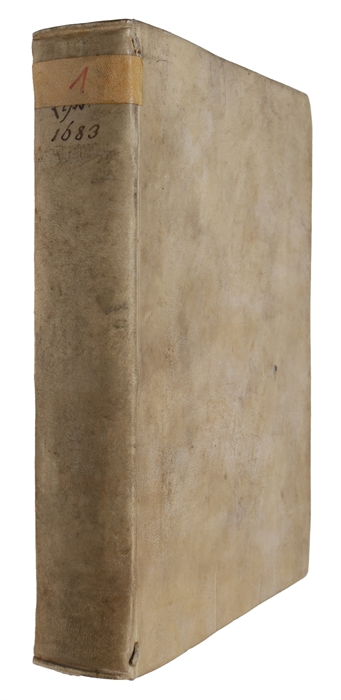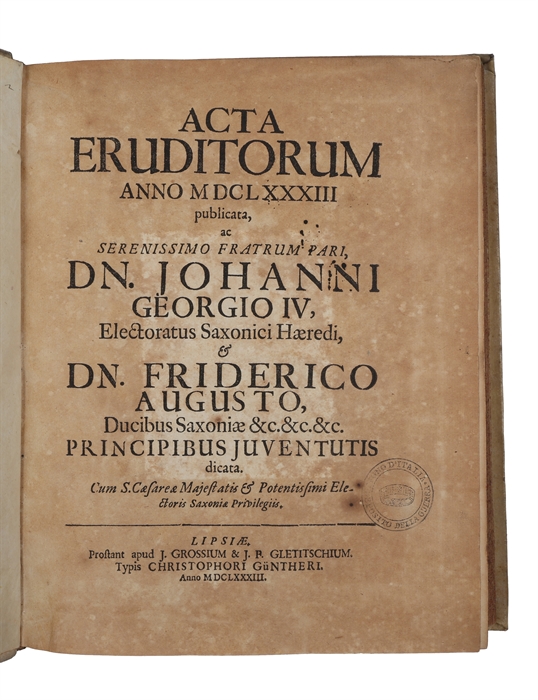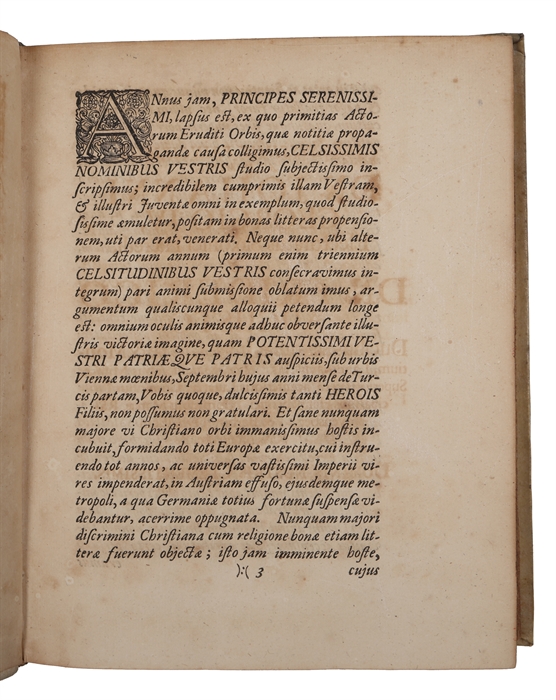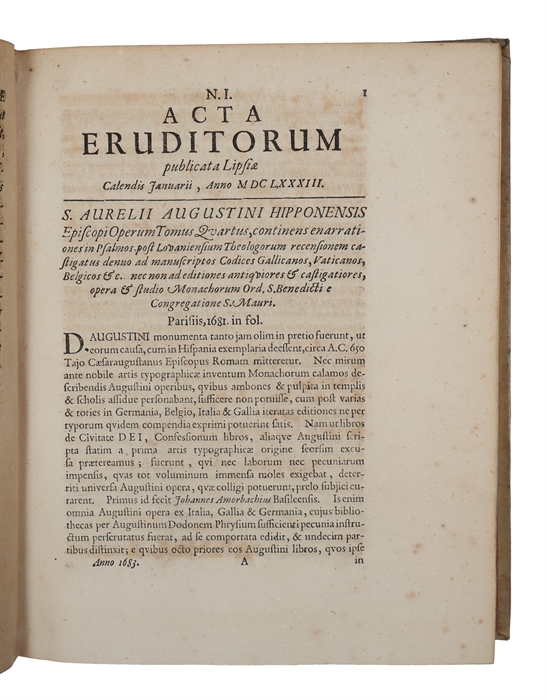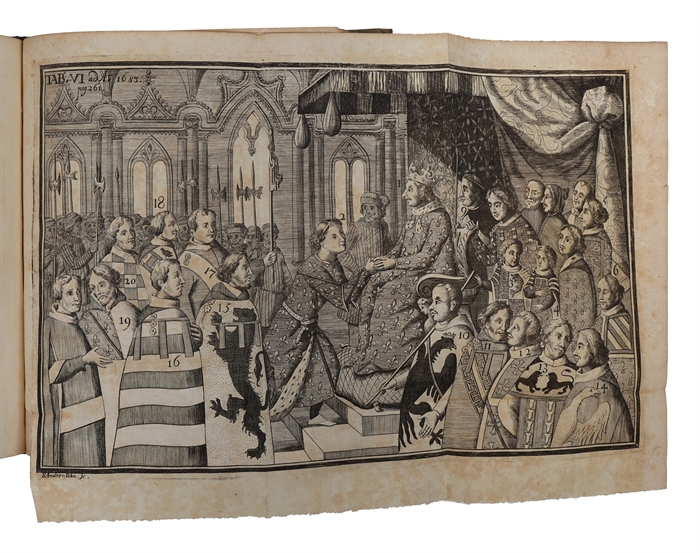FORCED LEIBNIZ TO PUBLISH THE CALCULUS
TSCHIRNHAUS, EHRENFRIED W. V. [FIRST PUBLICATION OF THE "TSCHIRNHAUS TRANSFORMATION".]
Methodus datae figurae, rectis lineis & curva Geometrica terminate, aut Quadraturam, aut impossibilitatem ejusdem Quadraturae determinandi. (+) Nova Methodus determinandi Maxima & Minima (+) Aufrendi omnes terminos intermedios ex data aequatione.
Leipzig, Grosse & Gleditsch, 1683.
4to. Contemporary full vellum. Handwritten title on spine. Library label to pasted down front free end-paper and a small stamps on titlepage. In: "Acta Eruditorum Anno MDCLXXXIII". As usual with various browning to leaves and plates. Tschirnhaus' paper: pp. 122-124; Pp. 204-207; Pp. 433-437. [Entire volume: (8), 561, (7) pp + 13 plates].
First appearance of Tschirnhaus's three exceedingly important papers which were to to initiate one of the most famous mathematical discoveries.
In the papers he used infinitisimal methods which were very close to Leibniz's method and where he tried to lay down criteria for rational quadratures in the case of conic, cubic and quadratic curves, papers that led Leibniz to publish his first paper on the differential calculus, the "Nova Methoda" in the Acta for 1684 in order to secure his priority over Tschirnhaus concerning the calculus. Leibniz discovered, when he read Tschirnhaus' papers, that Tschirnhaus had here published results showing similarity with Leibniz's invention of the calculus as he had confided to Tschirnhaus earlier, during their Parisian stay, and this without references to Leibniz.
The present volume of Acta also contain the first edition of Tschirnhaus' "Tschirnhaus Tranformation". Tschirnhaus work intensively on finding a general method for solving equations of higher of higher degree. "His transformations constituted the most promising contribution to the solution of equations during the seventeenth century; but his elimination of the second and third coefficients by means of such transformation was far from adequate for the solution of the quintic.(Boyer. A History of Mathematics, 1968, 472 p.).
Tschirnhaus (1651-1708) , a Saxon nobleman, had as wide interest as acquaintances: He studied in Leyden, served in the Dutch army, visited England and Paris several times. He set up a glassworks in Italy and is said to have introduced Porcelain to Europe. He wrote about philosophy and mathematics and was a close friend of Leibniz.
Order-nr.: 46399

